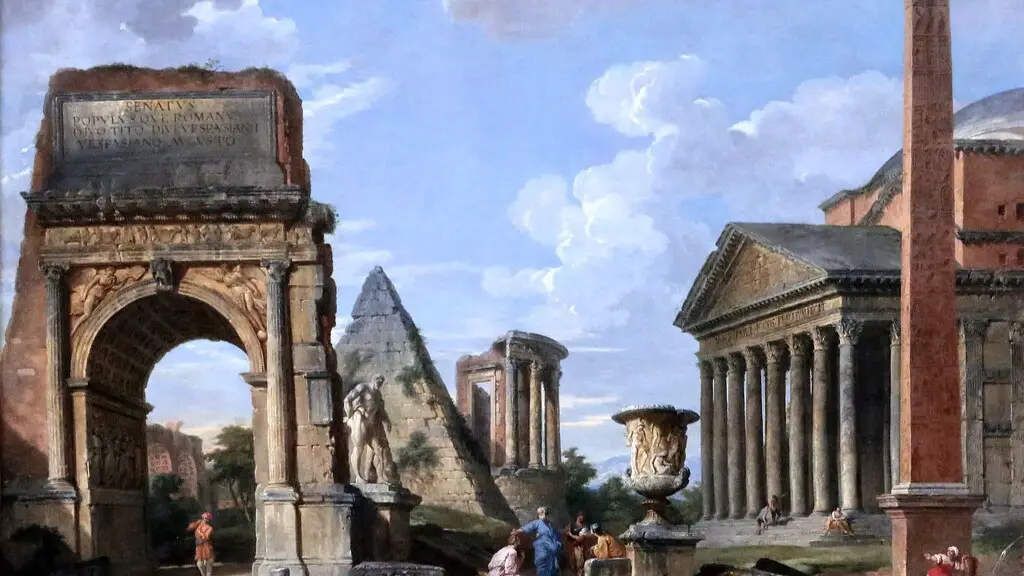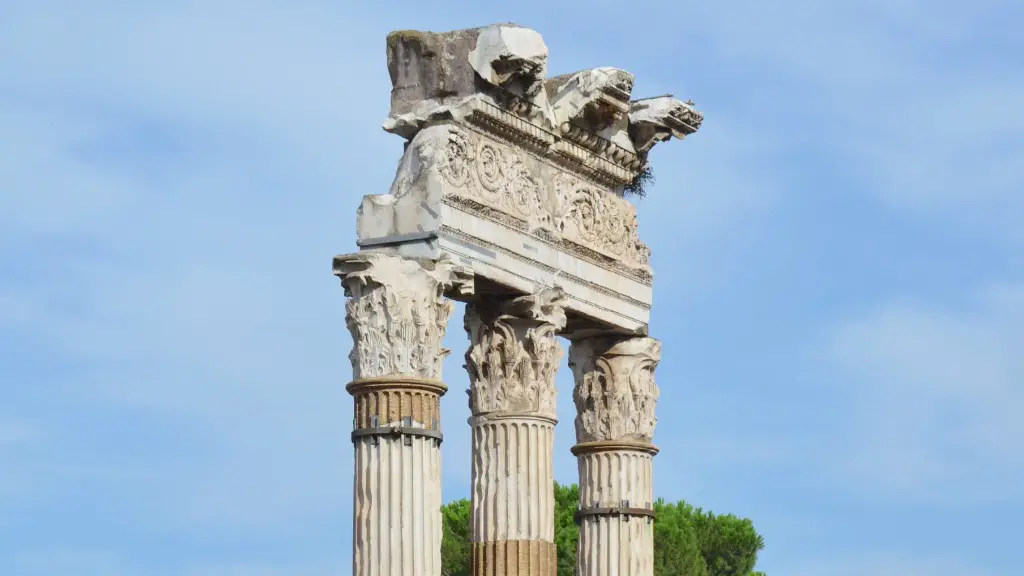Where did the civilization of ancient Rome begin? This question has long mystified historians and archaeologists alike, as the historical record of Rome’s rise to power remains stubbornly elusive. While the exact chronology of Rome’s evolution is open to debate, there is enough evidence to make some general conclusions about the origins of Roman civilization.
To begin with, the Roman Republic emerged from a small city-state in the hills of the Italian peninsula. It is believed that the first settlers inhabited the area around 1000 BC, and by the 6th century BC they had become the dominant power in the region. The ancient Romans were capable of exploiting the local resources and adapting their culture to suit the environment, which allowed them to expand their domain and eventually create an empire.
The leading experts in Rome’s past cite different reasons for the Republic’s rise. Many believe it was due to their advanced agricultural methods, which allowed them to produce more food than other Italian city-states. Other factors, such as a consular system of government, a powerful military, and a devotion to the gods, all likely contributed to their success.
Remarkably, it was also the distinctive characteristics of Roman society that allowed it to survive and persist over such a vast span of time. Along with their strong government, the Romans were also highly educated and productive citizens, creating one of the most enduring cultural legacies in the world. Their legal system, engineering marvels, impactful literature, and other facets of their culture are still visible today.
Roman Mythology
Though perhaps not as tangible as their legal system or engineering feats, the mythological history of Ancient Rome also played an important role in their development. Stories involving Roman gods such as Jupiter, Juno, Neptune, and Venus have shaped Roman culture from the dawn of their civilization, serving to inspire and educate citizens.
Roman mythology was closely tied to religious observances and held an important place in the spiritual and cultural heritage of the people. Often, Roman gods and goddesses served to explain certain phenomena, such as agriculture or war, and inspiring citizens to strive to be their best. Many of these themes can be seen in the works of later Roman writers such as Virgil and Cicero.
Though myths were probably transmitted and developed through oral traditions, artists and writers were quick to capture such stories in writing. For example, in the late 5th century BC, a man known as Livius Andronicus produced one of the earliest written Roman works of mythology. This epic poem, known as the ‘Odyssey’, was closely tied to Greek mythology and allowed Roman culture to better articulate their animistic beliefs.
Spread Of Roman Influence
From their roots in the Italian peninsula, the Romans began to spread their influence through various conquests and acquisitions. During the early centuries of the Republic, Rome was constantly engaged in internal disputes and conflicts, as well as a series of wars with neighbouring states.
However, in the late 4th century BC, an ambitious Roman general known as Julius Caesar began to assert control over the Mediterranean region. Through a successful series of military campaigns, he was able to expand Rome’s territory and unite many of the Greek-speaking states under a single banner.
By around 50 AD, Rome had achieved unprecedented levels of power, with a vast network of provinces, colonies, and client states. Their influence could be felt all around the Mediterranean region and beyond, from the far reaches of Britain to the fabled lands of Egypt, and even some areas of modern-day Germany.
Architecture And City Planning
Romans always considered the practical and aesthetic considerations when it came to city planning. Ancient Rome is known for its many monumental public works, including aqueducts, arenas, gathering places, and even public baths. Such public amenities had a unifying effect and demonstrated the city’s wealth and power.
But beyond their achievements in urban development, the Romans also left behind their stamp when it came to architecture. Ancient Roman architecture is still visible in modern day Italy, and served to inspire later generations of builders and engineers.
The Colosseum, for example, is considered one of the greatest feats of Roman architecture. Built to host gladiatorial contests, it featured an intricate system of seating and a retractable roof, as well as advanced engineering techniques that allowed it to remain standing for centuries. Other famous Roman monuments such as the Pantheon, the Roman Forum, and Trajan’s Column still stand to this day, both as impressive edifices and a reminder of Rome’s past glory.
Founding Of Rome
The exact date of Rome’s founding is shrouded in mystery and left to the imagination. Legends abound as to how the city was founded, from the twin brothers Romulus and Remus to the eponymous founder of Rome, Aeneas.
In reality, the exact details of Rome’s founding are likely to never be known. Accounts from the period make mention of a ‘Roma Quirites’, or Romans of the Quirian tribe, which suggests that the city was founded by the merger of different tribes in the region. It is thought that the city was at least partially settled around 900 BC and formalized into a city shortly thereafter.
Though Rome is no longer the mighty empire it once was, the city of Rome remains a powerful symbol of civilization and progress. The city’s long and illustrious history serves as a reminder to all of the achievements early civilizations are capable of when they are united under a single banner.
Contributions to Science
Though most often remembered for their feats of engineering and architecture, the Romans also made significant contributions to the world of science. During the heyday of the Roman Republic, physicians and philosophers made strides in understanding the natural world.
Most notably, Romans had an advanced understanding of geometry, as exemplified through their use of the circle and square as symbols of perfection and virtue. In addition, Romans such as Augustus, had advanced knowledge of astronomy, which was thought to be essential for navigation.
Other scientific advancements included the development of botany, zoology, and physiotherapy. Roman medical specialists were able to successfully diagnose and treat a variety of illnesses, and the knowledge they acquired was passed down the generations.
Roman medical advances were also influential in later centuries. For example, Galen, a Roman physician of the 2nd century AD, contributed to the topics of anatomy, pharmacology, and medical ethics, and his ideas were still discussed in medical circles up until the Renaissance period.
Roman Influence on Modern Life
Though much of the Roman Empire has since disappeared, the legacy of its culture and ideas lives on, having shaped many of the aspects of modern life. From language to literature, law to engineering, the Romans’ influence is still felt in many areas.
One need only look at the Latin language for a prime example of the continued dominance of Roman culture. Latin began as a spoken tongue, but was later standardized and codified into Classical Latin. Latin then served as the lingua franca for education and communication for centuries, and is still a major influence in the Romance languages of French, Spanish, and Italian.
The impacts of Roman engineering can also be seen in almost all parts of the modern world. Notable features like the arch, and advancements in concrete, agricultural techniques, and road networks can all be traced back to the Romans, and their influence can still be seen in modern-day infrastructure.
Moreover, Roman jurisprudence still provides the foundations of law in many countries around the world. The Roman concept of ‘innocent until proven guilty’, for example, is still commonplace in many countries. Similarly, the concept of marriage as a consensual union is also of Roman origin, and continues to be the foundation of marriage in the modern world.
All in all, understanding Roman civilization and its impact is important to understanding the modern world and our place within it. The legacy of Rome continues to stay firmly entrenched in our lives, and its influence will doubtlessly continue to be felt for many years to come.

